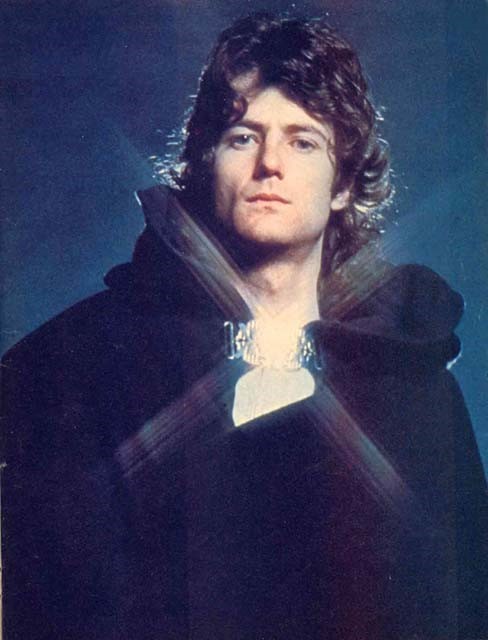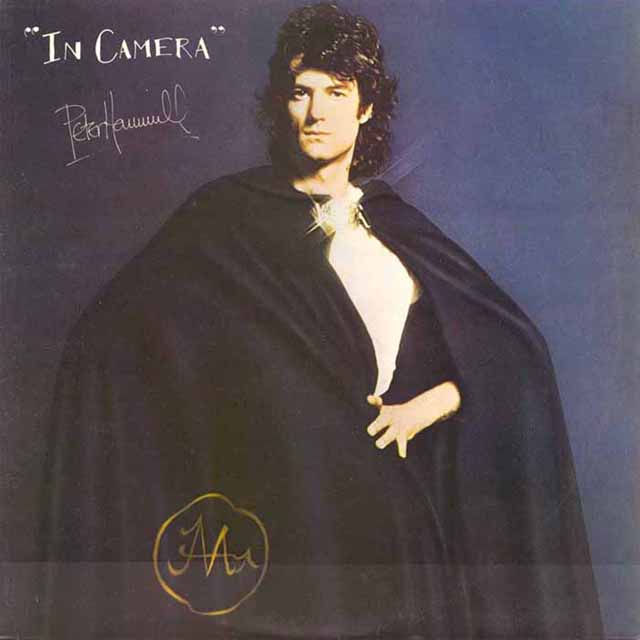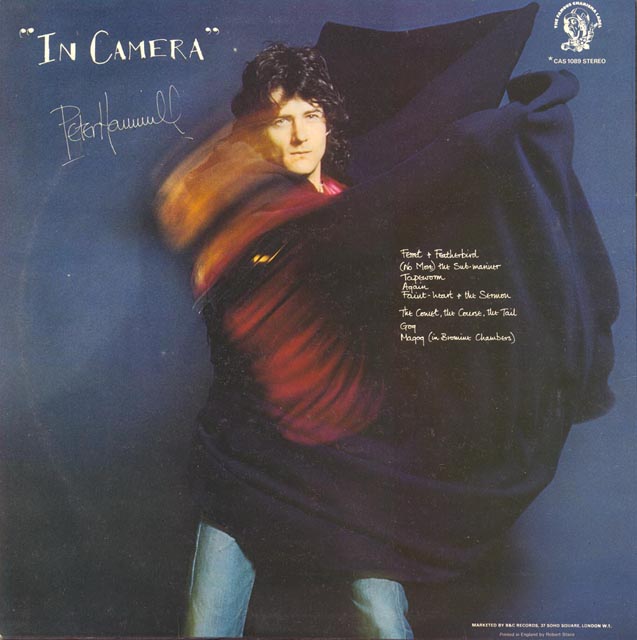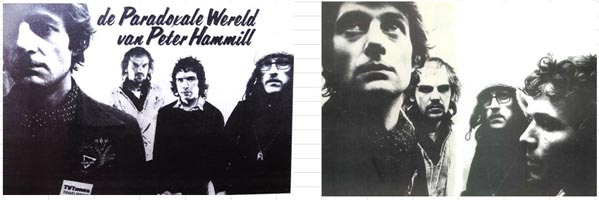|
Mike Van der Vord is a photographer who worked with both Peter Hammill and Van der Graaf Generator on the classic albums In Camera and Still Life. Here, he tells Jim Christopulos how he came to be a photographer, how he got connected with PH and VdGG, and some of the inside story on those sessions.
JC: How did you get started in photography. What led to you doing album covers?
MV: There's quite a gap between my getting interested in photography and shooting album covers. I was born in Cleethorpes in 1945. My first recollections go back to my first camera which was a Kodak Brownie 127. It was a birthday present from my mum and dad when I was about 10yrs old. I was brought up in Iraq from being a 6-month-old baby until I was 13 years old. My father got a job in London and my family returned to the UK. I was sent to boarding school when I was 10yrs old and returned to Iraq for the school holidays. At boarding school there was a pukka B/W photographic darkroom that had been built and provided for by my boarding school old boy who was called Wallace Heaton. Wallace Heaton had a very large camera shop in Bond Street. I spent nearly all my recreation time in the dark room processing and printing my photos as well as family's and friends' films. My secondary education was at UAL London College of Communication studying for their 3-year course in professional photography. My course head tutor encouraged me to specialize in fashion photography. I duly got a job straight away as a third assistant to Peter Clark of Peter Clark Studios Ltd. There was a staff of 34 employees servicing just three fashion photographers - Peter Clark, Alan Boyd and Claude Luzzatto. I was one of seven photographic assistants. I stayed there for nearly three years. My starting wage at Peter Clark Studio was £8.00 per week and when I left it had risen to £10.00 per week! My next three years were in another big London Fashion Studio as a salaried fully fledged fashion photographer. The studio was called EG Evans Ltd. My salary there was trebled to £1,550 per annum. That was quite a reasonable salary then. It was at this studio where I first met Frank Sansom who was our production manager. We got on very well together. Frank went on from there to be the Art Director of Charisma Records. Meanwhile I had created a company called The Visual Connection (TVC Ltd) along with Claude Luzzatto of Peter Clark Studios. The studio was in Glebe Place Chelsea, I was there for 10 years. It was at that studio where the VdGG Still Life shots were taken.
JC: You did a lot of work for various Charisma artists: Bert Jansch; Clifford T Ward; GT Moore & the Reggae Guitars...
MV: Yes, I did quite a lot of work for Charisma Records, mostly album covers. My top three covers, in no particular order, are Bert Jansch LA Turnaround; Peter Hammill In Camera; Van der Graaf Generator Still Life. And the late Clifford T Ward was good to work with. I also did some PR and publicity shoots for quite a few other Charisma artists that you didn't mention. I remember two separate shoots with Peter Gabriel and Steve Hackett after they had left Genesis. I also remember doing several album covers/PR shoots with String Driven Thing. One of the locations for them was at Portmeirion, where The Prisoner TV series was filmed. I also seem to remember doing a shoot with Toots and the Maytalls before they were well known but I'm not sure if it was an album cover or not, or even if they were with Charisma Records.
JC: How did you become involved with Charisma?
MV: I became connected with Charisma Records via Frank Sansom who worked with me as an Art Director and Production Manager at EG Evans Ltd Studios Primrose Hill. Between jobs, we kept in touch playing squash!
JC: Did you ever meet Tony Stratton Smith, head of Charisma?
MV: Yes, I met Tony Stratton Smith several times at their HQ in Soho. He was a fine man, larger than life.
JC: I'm guessing that your involvement w/Charisma led to you photographing Peter Hammill's In Camera in 1974. Where did that shoot take place?
MV: I'm 99% sure that In Camera was my first work with Charisma Records. I think I shot it in 1973 in a studio I rented short term before TVC Ltd was formed. The Peter Hammill In Camera shots were shot in a friend's studio near Baker Street tube station… a friend of a friend's studio in Siddons Lane which I hired for the shoot as The Visual Connection TVC Ltd in Glebe Place Chelsea wasn't quite ready to work in - it didn't open until July 1973. Siddons Lane now looks completely different to how it was in 1973.
JC: How was Hammill to work with? Was the cloak your idea or was it his?
MV: Peter was great to work with as were VdGG later, on the Still Life album cover. I don't remember whose idea the cape was. The cape worked very well and Peter really got into projecting the images we finally created. The results were a team effort. I think it was just the two of us in the studio. [I don't remember] Frank Sansom art directing that session. Frank usually let me get on with it, subject to a fairly wide brief pre shoot. I do remember waiting with bated breath to see the finished transparencies from the laboratory. It was a memorable experience and will always be one of my favourite shoots. It was fun!
Had you ever seen PH or VdGG live, were you a fan?
MV: I think I only saw them live once. Probably in North London. Can't expand on that, sorry. I do like the lyrics of PH. He is certainly a poet in my opinion. VdGG are accomplished and creative musicians, and I admire their work immensely.
JC: In '76, you did the back cover VdGG 'head shots' for the Still Life album. How did that come about?
MV: As far as I can remember Frank Sansom rang me up and booked me to do it. The brief was to do the blur effect I did on the rear cover of Peter Hammill's In Camera. I suggested increasing the blur effect existentially. So, I followed the brief with interest! I think a lot of people thought that both sides of the album cover should have been my photos and not the artwork that was on the front cover.
JC: Do you remember anything about the VdGG session? Where was the shoot? What were they like to work with?
MV: It was shot at The Visual Connection TVC Ltd. Studios, 50 Glebe Place Chelsea SW3. All the band were great to work with. They were all extremely cooperative and helpful. It was a memorable album cover shoot. I was thrilled with the results when I got them back from the processing laboratory the next day. All the effects were done "in camera" (lol). No Photoshop in those days.
JC: Besides the headshots on the back of Still Life, did you also shoot any group shots? I feel like I've seen you credited on some promo shots but now I can't find a credited photo. Did you shoot these?
MV: I think I did probably take the group shots in the same session, but I'm not 100% sure.
JC: Would you have any of the outtakes from the Hammill or Van der Graaf sessions? I have to ask, of course!
MV: No, I do not have any outtakes from the work I did for Charisma Records. In those days, all the work was shot on transparency film and the clients insisted on retaining all the outtakes.
JC: Unlike many artists of their era, the legacy of Hammill and Van der Graaf continues to grow and modern critical assessment has elevated the band to true cult-hero status. Their influence is mammoth and increasingly acknowledged. How do you look back at your involvement with them - are you happy to be part of their history or was it just another photo gig?
MV: I agree with your assessments regarding PH and VDGG. No, the shoots for them certainly weren't just another photo gig. The shoots I did with them left me full of pride and a swelling sense of well-being. The shoots were memorable and still there even after nearly 50 years.
Jim Christopulos, February 2024.
 |





